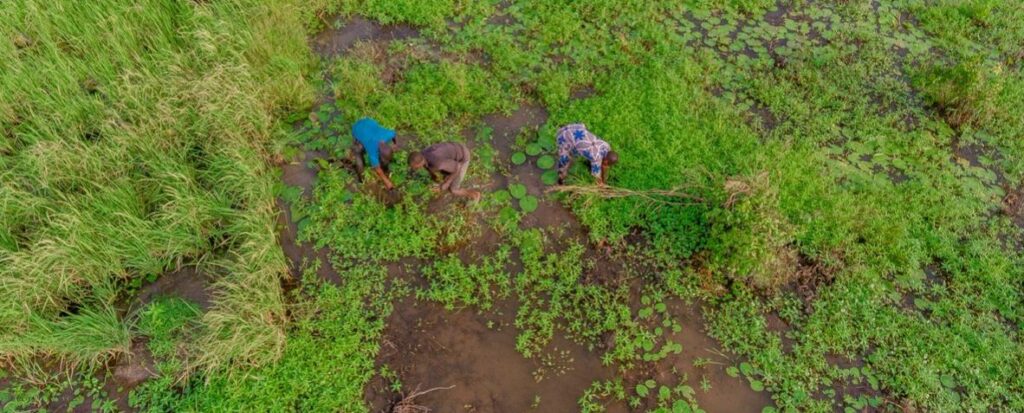BENIN – Meet Ahoho and Ablogname, 2 villages in the municipality of Athiemé. More than 4300 people live there, about fifty-fifty men and women. They are mainly farmers and fishermen, who suffer more and more from the floods of the Mono River. The inhabitants experience floods almost every year, whereas it used to be about every five years. The seasons are also less stable and the dry periods last longer, due to climate change.
The area where they live is rich in wetlands. Join For Water works in 3 of these wetlands, which together account for 8 hectares. 120 farmers exploit them for their agricultural activities. But the wetlands are filling up due to floods and the sediments like sand and clay that they bring. The floods are caused by heavy rains and by the Mono River overflowing its banks during the rainy season.
At present, an increasing number of farmers are getting water for their crops from the alluvial aquifer (the groundwater located in flood plains along the river) through a small borehole. This happens mainly at the end of the dry season, before the rains come. But only the more well-off agricultural producers can afford it; the most vulnerable producers depend on rainfall or use the water resources in the wetlands.
The message is to adapt
The vulnerability of the farmers forces them to produce very short-cycle crops, which are not necessarily the most profitable. Moreover, due to a lack of technical know-how, local producers are increasingly reluctant to draw surface water from wetlands. Too low a water level in the river or the abundance of sediments make the situation very difficult.
Join For Water and its partners are restoring these wetlands and looking for sustainable solutions. 3 operations are planned to better protect the population against floods and to help the farmers to get through the dry season:
- clearing the wetlands of excess sediment so that more water is available for growing vegetables, especially during the critical period at the end of the dry season;
- constructing an earthen dike to protect the villages from the floods, this can be done with the sediments retrieved from the wetlands;
- better store and replenish the groundwater in the floodplain.
And it doesn’t end with these concrete field operations. Through advocacy and knowledge sharing, Join For Water and its partners will influence municipal and supra-local authorities to adjust their environmental policies and strategies. Important elements are the status of wetlands and the integration of ecological management and flood protection.
Text: Francis Guyon

